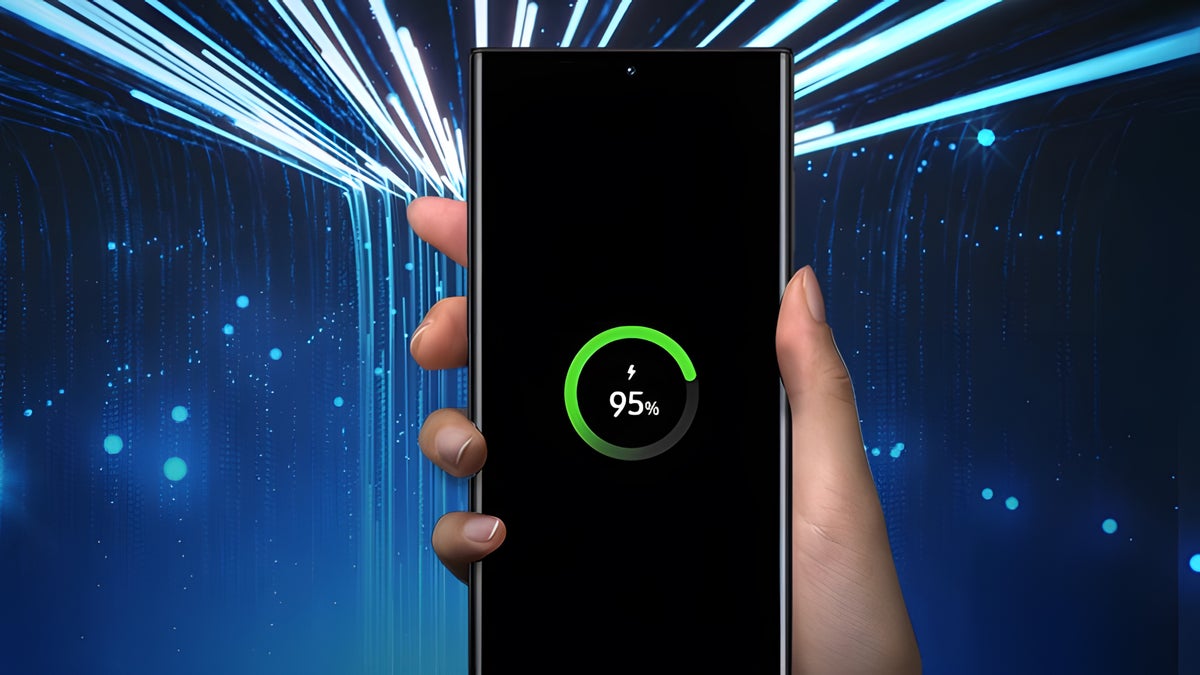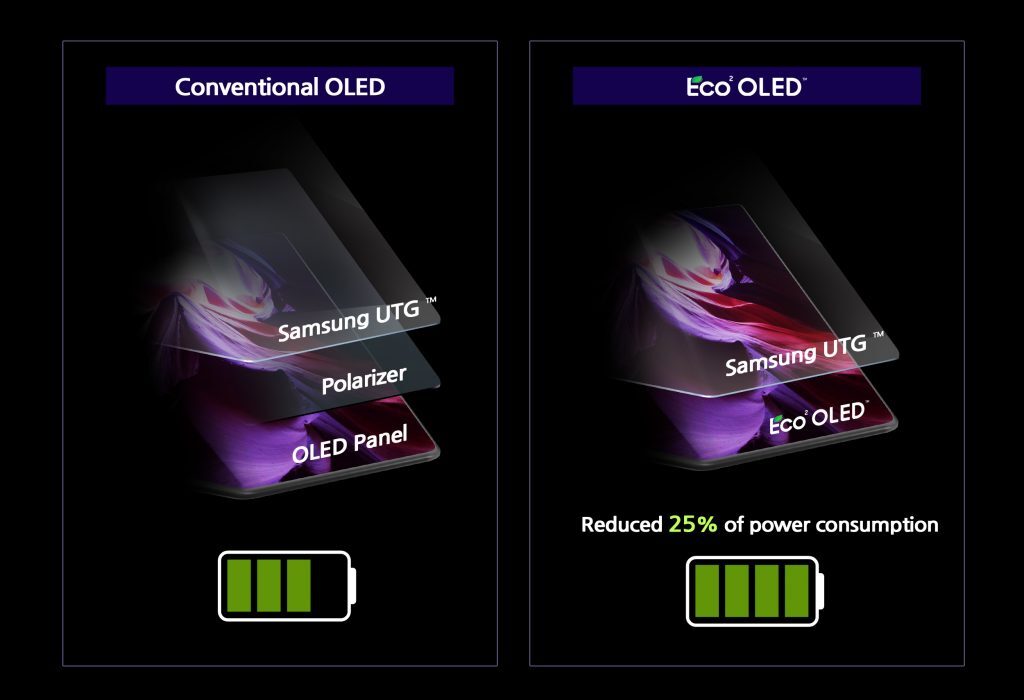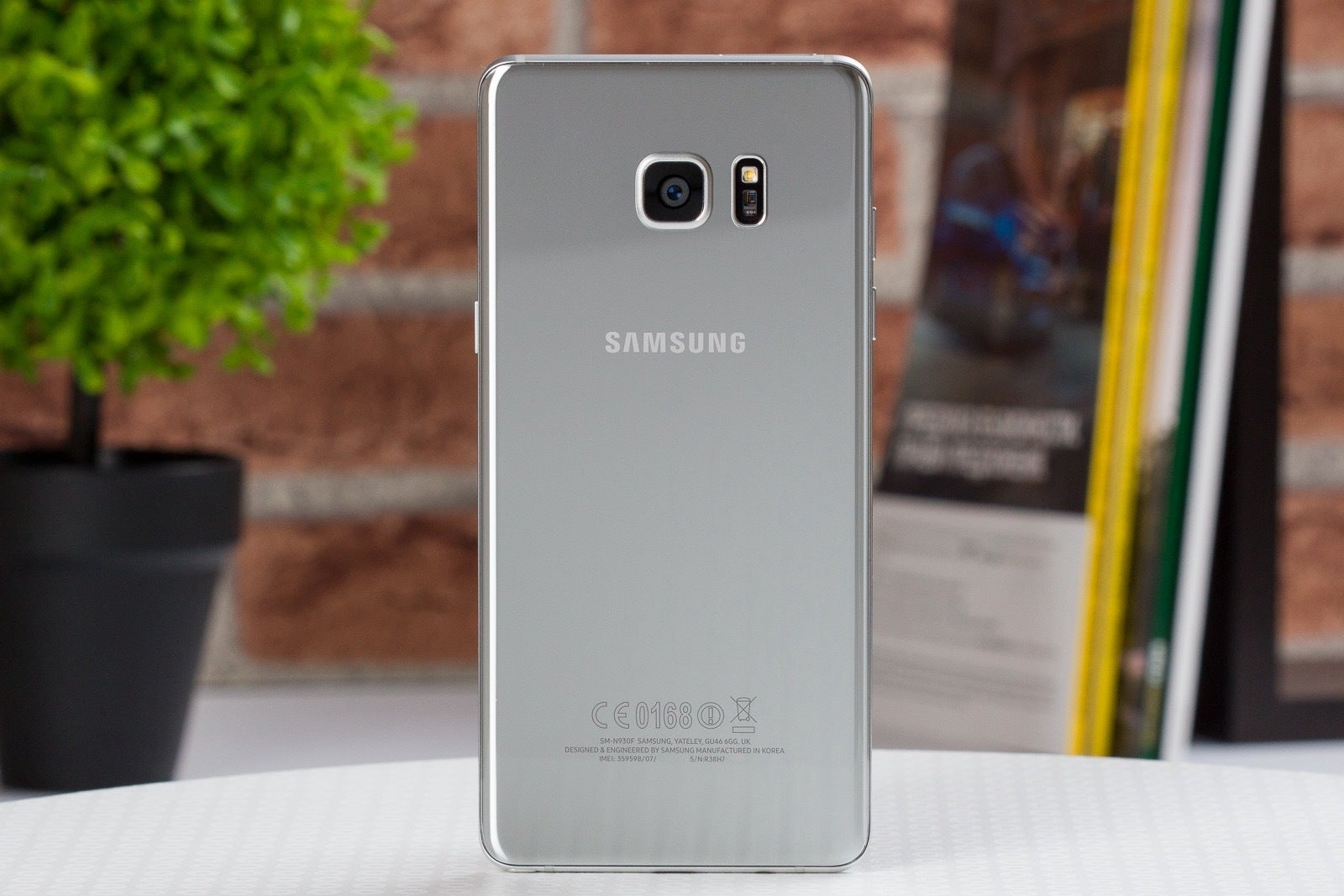Is Samsung's new display tech a way to compensate for their reluctance to increase battery size?

Image credit — Samsung

Samsung Eco2 OLED display structure | Image credit — Samsung
This breakthrough technology opens up exciting possibilities for smartphone design. With the freedom to use smaller batteries without sacrificing battery life, we might see phones becoming even slimmer and lighter. It could also pave the way for innovative form factors, like foldable phones with larger, more immersive displays, without the added bulk of a bigger battery. It's interesting to consider how this technology might shape the future of smartphones and what new, exciting designs we might see in the years to come.
While Samsung's focus on energy-efficient displays is commendable, it's worth noting that the company hasn't made significant strides in increasing battery capacity in recent years. Since the unfortunate incident with the Galaxy Note 7's exploding battery, Samsung seems to have adopted a cautious approach. They prioritize safety and reliability, but it's come at the cost of battery size improvements. In contrast, competitors like OnePlus have been pushing the boundaries with larger batteries and faster charging technologies. It makes you wonder if Samsung's focus on display technology is, in part, a way to compensate for their reluctance to increase battery size.

The Samsung Galaxy Note 7 is where Samsung's cautious approach to battery size began | Image credit — PhoneArena
From a consumer perspective, the benefits of this new display technology are evident. Less frequent charging translates to greater convenience and freedom from the constant need to find an outlet. The potential for slimmer, more innovative phone designs is also an attractive prospect. However, there's also a lingering concern that Samsung might be missing an opportunity to deliver even better battery life by combining this technology with larger batteries. The question remains: is this new display a genuine breakthrough or a clever way to sidestep the battery size issue?
It's important to remember that the smartphone industry is constantly evolving. What might seem like a compromise today could become a standard feature tomorrow. As consumers, we have the power to shape the future of smartphone technology through our choices and preferences. Perhaps, with enough demand for larger batteries, Samsung might be persuaded to revisit its approach.
Beyond the immediate implications of Samsung's new display technology, there are broader questions to consider. How will this innovation impact the environment? Will it lead to a reduction in electronic waste as phones last longer? Or will it simply encourage consumers to upgrade their devices more frequently?
It's also interesting to ponder the potential impact on the mobile app ecosystem. Will developers optimize their apps to take advantage of this new technology, leading to even greater energy efficiency? Or will they continue to push the boundaries of performance, requiring more powerful hardware and larger batteries?
In the meantime, it's exciting to see how this new display technology will be integrated into future Samsung smartphones. Will it lead to a new era of slimmer, more innovative devices? Or will it simply be a way to maintain the status quo while offering incremental improvements in battery life? Only time will tell.
It's also interesting to ponder the potential impact on the mobile app ecosystem. Will developers optimize their apps to take advantage of this new technology, leading to even greater energy efficiency? Or will they continue to push the boundaries of performance, requiring more powerful hardware and larger batteries?
In the meantime, it's exciting to see how this new display technology will be integrated into future Samsung smartphones. Will it lead to a new era of slimmer, more innovative devices? Or will it simply be a way to maintain the status quo while offering incremental improvements in battery life? Only time will tell.
Overall, Samsung's new display technology represents a significant advancement in the quest for longer-lasting smartphone batteries. The potential benefits for consumers, from less frequent charging to sleeker phone designs, are undeniable. However, it also highlights a curious trend within Samsung's design philosophy. By focusing on energy-efficient displays, Samsung has found a way to improve battery life without taking the perceived risk of increasing battery size. Whether this strategy will prove successful in the long run remains to be seen.
Follow us on Google News














Things that are NOT allowed:
To help keep our community safe and free from spam, we apply temporary limits to newly created accounts: